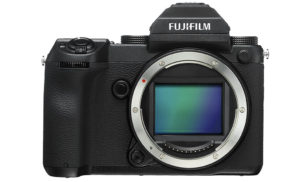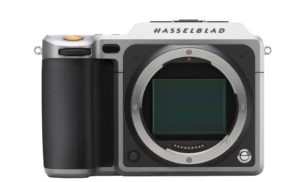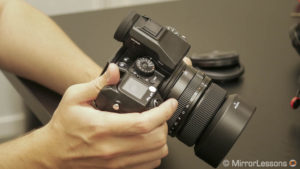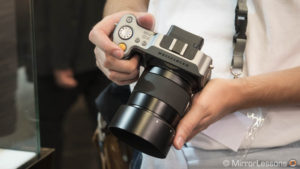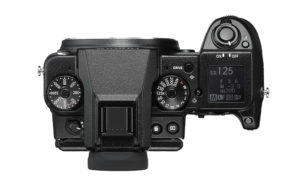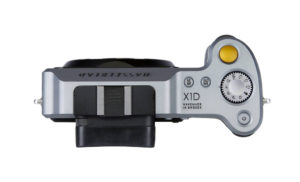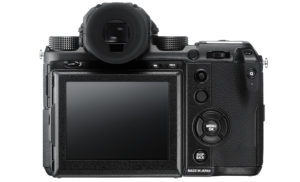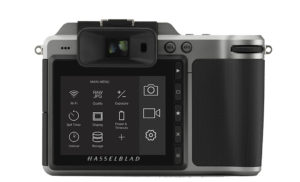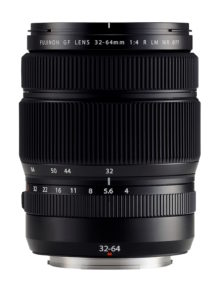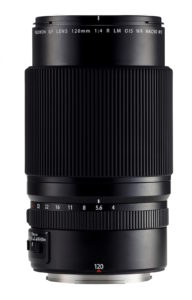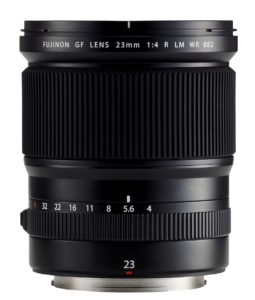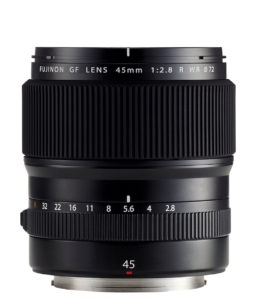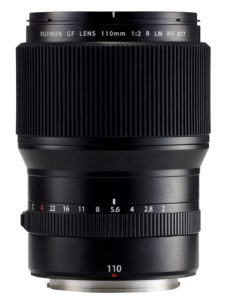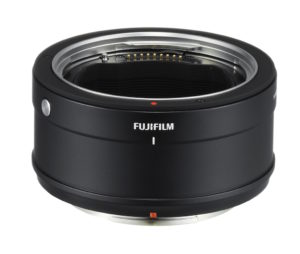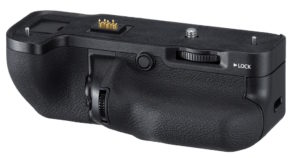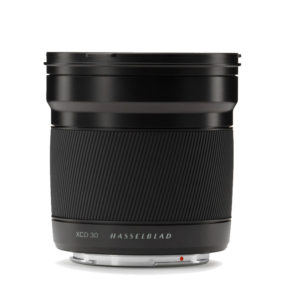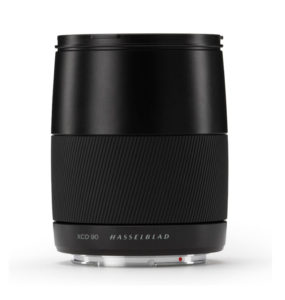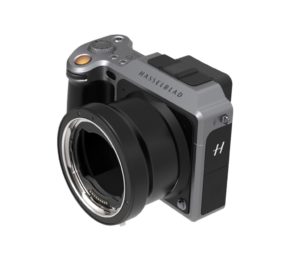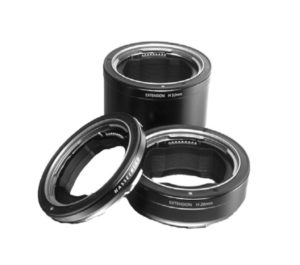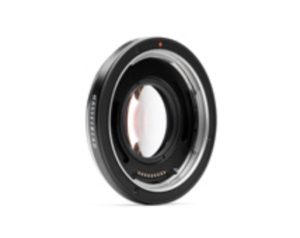The world of digital medium format has evolved immensely over the past couple of years. Though most cameras still remain out of reach for the average photographer due to the price, which is on average more than $30,000, this tendency is rapidly changing. In fact, some of the latest models are now being priced closer to flagship DSLRs such as the Nikon D5 or the Canon 1Dx mark II.
It all started with the Pentax 645z which, despite being large and heavy, has proved a popular model and can now be found for around $7000. Then Hasselblad released the X1D last year at a significantly lower price than its H series (around $9000) and gave it a compact mirrorless design. Now, Fujifilm is using its years of experience with medium format film and lenses as a springboard for the new GFX mirrorless system, opening up a new market for enthusiasts and professionals who, just a few years before, could only dream of owning a compact digital medium format system.
The Hasselblad X1D and Fujifilm GFX cameras are the subject of our comparison preview today. They are the latest medium format models and also the first two to go the mirrorless route, which makes them much closer in size to a 35mm format (full frame) camera.
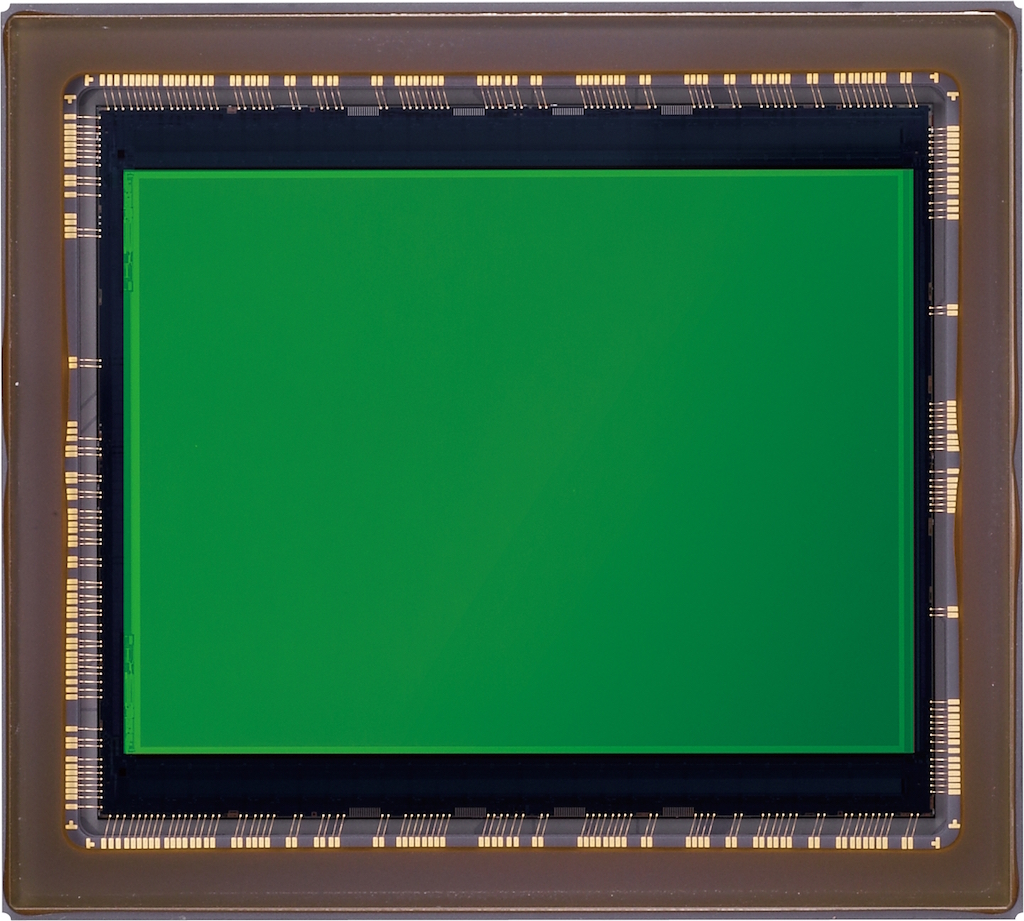
The two cameras, whose complete model names are GFX 50s and X1D 50c, share some similarities starting with the sensor: they are both based on a Sony 50MP 43.8 x 32.9mm CMOS sensor, which is the same found on other Hasselblad, Pentax and PhaseOne cameras. But if the heart is the same, there are many other differences between these two products, starting with the philosophy behind them.
Ethics statement: The information supplied in this article is based on the official specifications found on the Fujifilm and Hasselblad websites and our quick experience with the two cameras at Photokina 2016. If we get the chance to test them side-by-side, we will publish a full comparison. We were not asked to write anything about these cameras, nor were we provided any compensation of any kind. Within the article, there are affiliate links. If you decided to buy something after clicking the link, we will receive a small commission. To know more about our ethics, you can visit our full disclosure page. Thank you!
1. Design
The first relevant difference that immediately catches your eye is the design.
The GFX is bigger than the X1D. It’s not so much the width or the height – these are more or less the same – but rather the depth that is the biggest difference, with the GFX extending outward an 2 extra centimetres. The Hasselblad is slimmer and lighter by approximately 200g (725g vs the 920g of the GFX with EVF).
It is clear that Hasselblad took the aesthetics of the X1D very seriously, giving it a more sophisticated, modern and elegant design that is a pleasure to look at. You can notice the attention to details such as the yellow shutter release button for example.
The GFX, on the other hand, has a more traditional look and definitely feels chunkier. We held them both at Photokina and the Hasselblad feels particularly nice in the hand and really does look small when you consider the size of the sensor hidden inside. That said, I found the grip of the GFX excellent as well. Of course, these are only my first impressions.
2. Functionality
If we have a look at the buttons, dials and other configurations on the camera, we get another clear indication of how differently the two products have been designed.
The GFX follows the same path as Fujifilm’s APS-C X-series with several exposure dials (shutter speed, ISO, and exposure compensation without forgetting the aperture ring on the lenses), 5 function buttons, the Q button, an arrow pad, an AF Joystick, an AF mode selector and two command dials (front and rear). We can also notice the retro-illuminated LCD screen on top that displays the most important settings.
The X1D has fewer buttons but those it has are well-placed, such as the AF/MF and WB/ISO buttons on top for example. The shooting mode dial can be locked (just press it and press it again to unlock it) and features three custom modes. There are two command dials on the front and rear to control exposure and 5 buttons near the rear monitor. It is also important to note that the X1D is meant to be used more via the touch screen as we are going to see in a minute.
3. EVF and rear monitor
The X1D has a fixed 2.36 MP electronic viewfinder whose position is at the top-centre of the camera.
The GFX takes the concept of the EVF to a new level. First, it is detachable (and comes with the camera thankfully) but by purchasing the optional EVF-TL1 tilt adapter (check price on B&H Photo) that sits between the camera body and EVF unit, it becomes a multi-angle type whose mounting angle can be changed from 0° to 90° for horizontal landscapes or -45° to +45° for portraits. It also has a superior resolution of 3.69 million dots.

The rear monitor is another important difference. On the X1D, it is fixed, measures 3.0-inches and is touch sensitive, making it useful for many things such as navigating the friendly menu interface instead of using a traditional arrow pad.
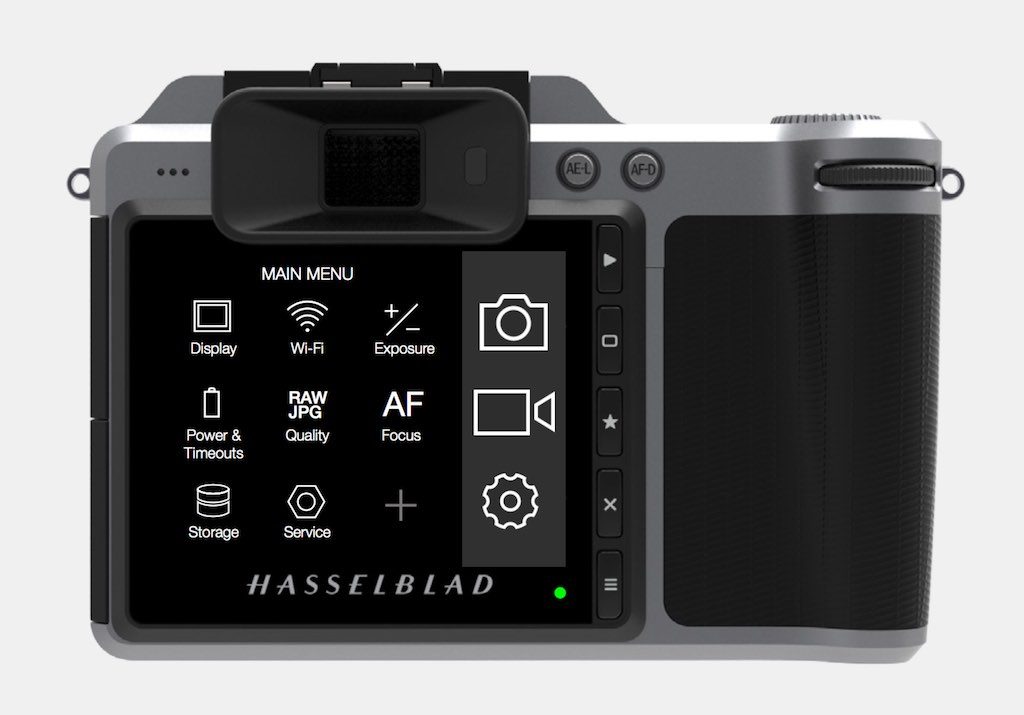
On the GFX, the rear monitor is also touch sensitive and can be used to select a focus point, swipe through the images in playback mode or select an option in the Q menu. The monitor is slightly larger (3.2″) and can be adjusted in three directions: up, down and to the side (like the X-T2).
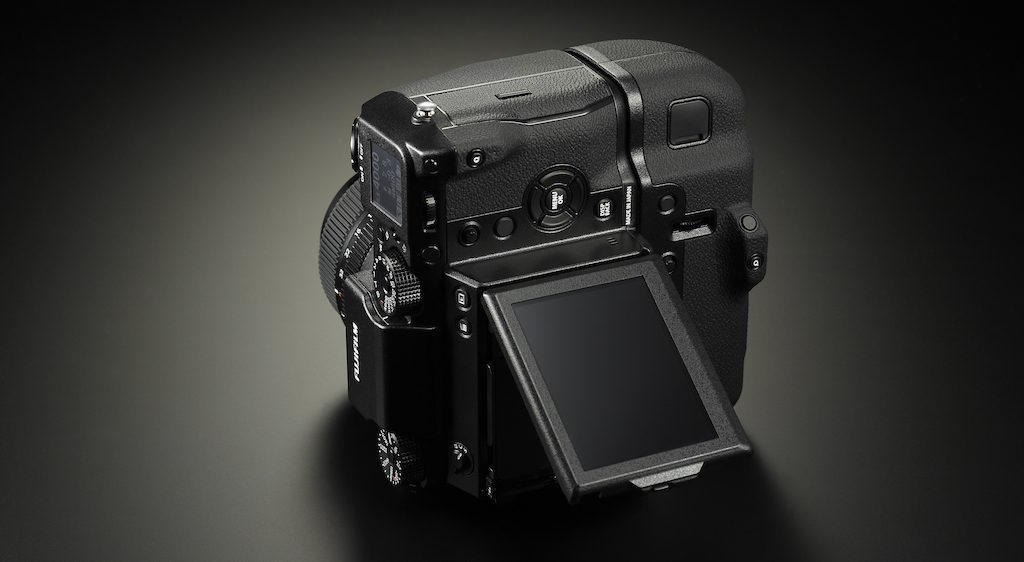
4. ISO sensitivity
Although the sensor and resolution are the same on paper, we know that the GFX’s chip has been optimised differently for the camera, following precise instructions from Fujifilm concerning the micro lenses in particular.
Another difference concerns the ISO output: the GFX has a native sensitivity of ISO 100 to 12800 and extended options including Pull 50 and Push 25600 to 102400.
By contrast, the X1D has a native ISO range of 100 to 25600.
5. Film Simulation Modes
Another difference that will be interesting to compare is the colour rendition.
The GFX includes the Film Simulation Modes we’ve grown to love on the APS-C X-Trans series. These profiles include the most popular such as Astia, Classic Chrome and ACROS. It will be interesting to see how Fujifilm optimised the profiles for the 50S Bayer sensor and how much more accurate the colour rendering will be in comparison to the X series.
The X1D doesn’t have multiple colour profiles but instead relies on the Hasselblad Natural Colour Solution (HNCS). It has been designed to deliver the most natural results possible with a dedicated algorithm calibrated on the camera’s sensor.
6. Shutter mechanism
Fujifilm decided on a focal plane shutter for the GFX that goes from a minimum of 60 minutes to a maximum of 1/4000s. It also features an electronic shutter option that raises the maximum speed to 1/16000s. During our brief encounter at Photokina, we found the shutter sound pleasant and discreet.
The X1D uses the leaf shutter mechanism found in its native lenses or adapted H lenses. The maximum shutter speed is 1 stop slower than the Fuji (1/2000s). A recent firmware update (1.17.2) implemented the electronic shutter option (max 1/10000s). The leaf shutter sound of the native XCD lenses have a much more pronounced and acute noise in comparison.
7. Flash sync
There has been some controversy surrounding Fujifilm’s choice in shutter mechanism and this is why.
Thanks to the leaf shutter mechanism, the Hasselblad X1D can sync flash at any of the speeds available, including the highest speed of 1/2000s. Many medium format systems have adopted this solutions since the days of film. The shutter opens and closes like an iris diaphragm and therefore exposes the entire sensor at the same rate and velocity, allowing for flash synchronisation at any speed.
Because of its focal plane shutter, the maximum flash sync of the GFX is a slow 1/125s. This gives you the advantage of a faster mechanical speed (1/4000s) and an even faster electronic shutter speed as seen above. Though it may appear that the camera is more limited in terms of flash sync speeds, there is a work-around: the new Fujifilm EF-X500 flash allows for HSS (High Sync Speed) with the GFX in addition to the X-T2, X-T1 and X-Pro2. There are also other strobes including professional studio flashes capable of HSS.
8. Autofocus
Concerning the autofocus system, both cameras use a contrast detection system but the GFX seems to have a more advanced configuration.
The GFX has a contrast detection system but with more focus points: you can select between 9×13 (117 points) and 17×25 (425 points). The single area can be changed with 6 different sizes, and the Zone AF and Wide/Tracking options are available in S-AF and C-AF. Based on the first reviews, the AF seems faster than normal medium format cameras and having so many points to work with is certainly an advantage.
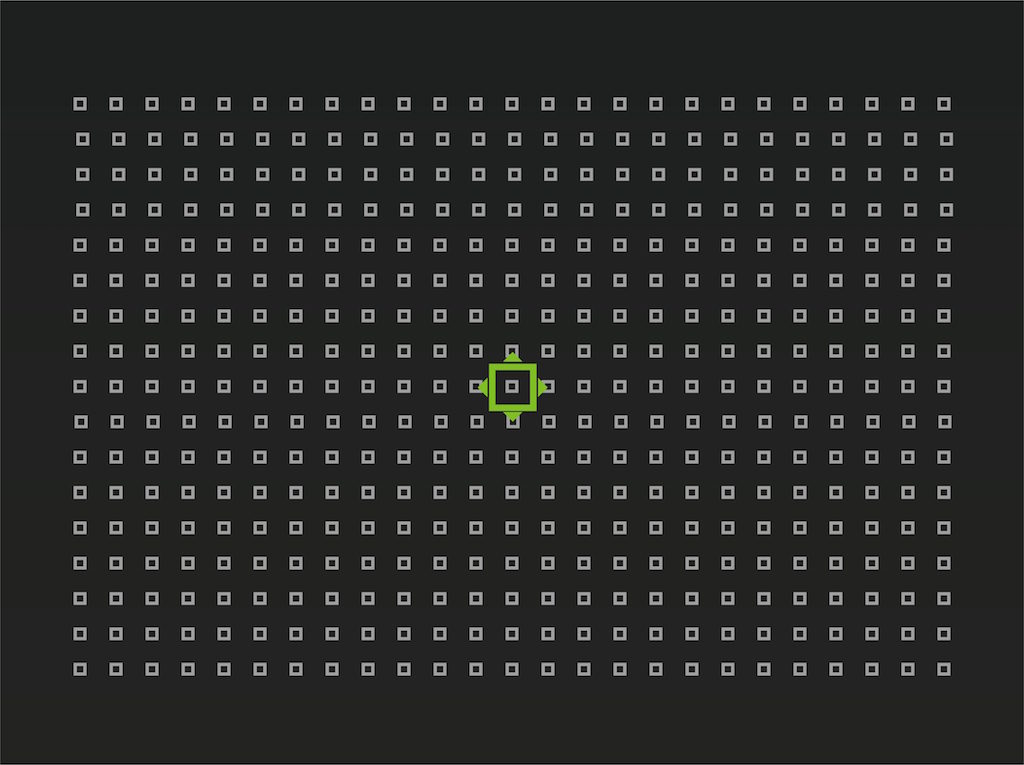
The X1D features a contrast detection autofocus system with 35 points when using the single area. A recent firmware (1.17.2) added three AF groups (35, 63 or 117 points). You can switch between single or continuous AF. In our brief time with it at Photokina, the camera definitely felt slower when acquiring focus (sometimes it took more than a second) but what we saw back then was a pre-production model so we can’t really come to any definite conclusion. Hasselblad may also enhance the performance of the camera via firmware updates.
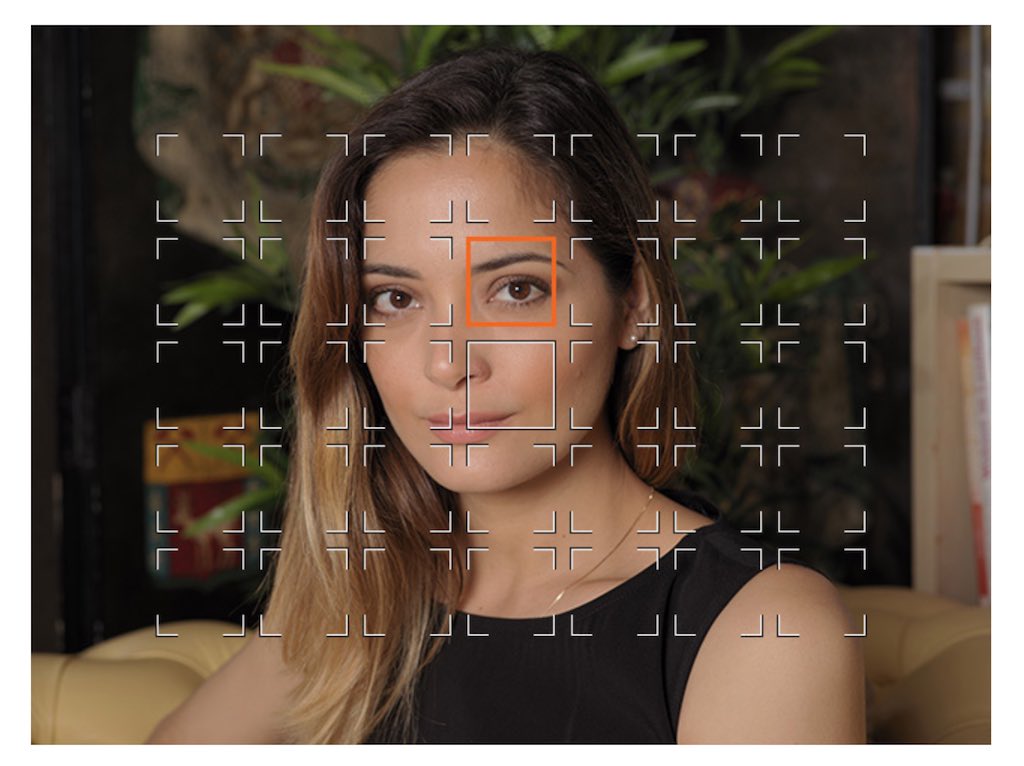
9. Lenses and accessories
Fujifilm has announced no less than 6 lenses for its new medium format system. The price and availability of the first three has already been revealed while the other three will be ready in late 2017.
(50mm f/2.2 equivalent)
(25-51mm f/3.2 equivalent)
(95mm f/3.2 equivalent)
(18mm f/3.2 equivalent)
(35mm f/2.2 equivalent)
(86mm f/1.6 equivalent)
It is clear that Fujifilm wants to launch a complete professional system that can challenge not only the most obvious competitor (X1D) but also all the other medium format systems out there, including the more expensive ones such as the H series from Hasselblad and Phase one.
Fujifilm will also release the H Mount Adapter G to allow you to use the Super EBC Fujinon HC lenses on the GFX (which are made by Fujifilm by the way!). The adapter has electronic contacts and will allow you to control aperture, in-camera lens correction data and fast flash sync up to 1/800s. Focus will be operated manually. A battery grip will be available as well.
The X1D was announced with three lenses. There is an XCD HC adapter that allows you to use the HC lenses on the camera too, as well as three extension tubes and a macro converter than can be used with HC and HCD lenses.
(24mm f/2.8 equivalent)
(35mm f/2.8 equivalent)
(71mm f/2.5 equivalent)
10. Price
Fujifilm promised a camera under $10,000 with the standard lens and they kept that promise: the GFX costs $6499 for the body alone and the GF 63mm f/2.8 is $1499 ($7,998 in total). The other two lenses cost $2,299 (32-64mm) and $2,699 (120mm Macro).
The X1D is definitely more expensive at $8,995 for body alone and $2295 for the 45mm f/3.5 (for a total of $11290). The 90mm costs $2695 but there isn’t a price for the 30mm yet.
Conclusion
The Fujifilm GFX will be ready to ship in February 2017 according to Fujifilm. If there isn’t a delay, the camera might become available more quickly than the Hasselblad X1D since the company has had some trouble respecting delivery schedules despite having announced the camera over six months ago.
While the two systems are both mirrorless and based on the same sensor, it is clear that they are very different in terms of design, functionality and, in my personal opinion, the target audience as well. Fujifilm wants to become a serious contender on the medium format market. They decided to skip a 35mm format series and release the GFX instead for those who want the ultimate image quality.
The X1D definitely has an appealing design but I do wonder who its target user is. I don’t think Hasselblad wants to compete with its own main system. Indeed the camera looks more like a portable complement for those who rely on a more professional medium format system for their work. Of course we will have to see how Hasselblad develops the new system over the coming years, especially now that competition from Fujifilm just became reality.
Check price of the Fujifilm GFX 50S on
Check price of the Hasselblad X1D 50C on
You may also be interested in the following articles:
- Fujifilm GFX 50s vs Sony A7r III – Image quality comparison
- Fujifilm X-T20 vs X-T2 – The complete comparison

